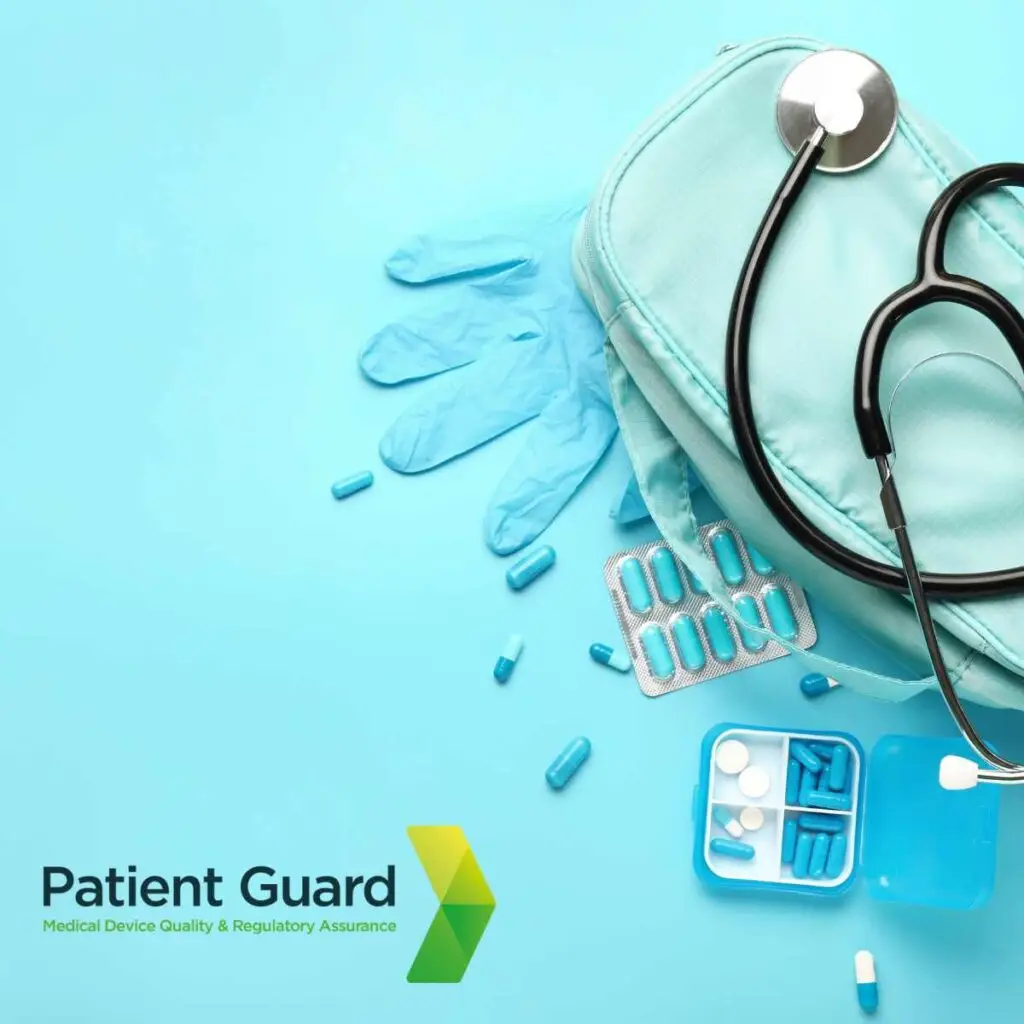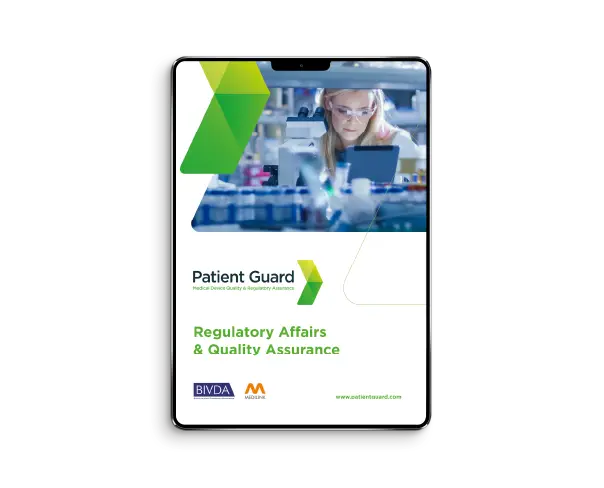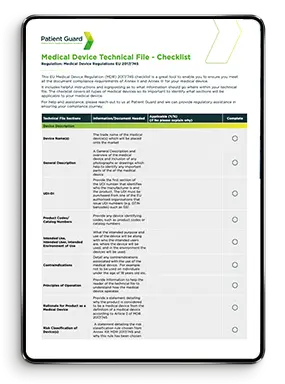What Are Medical Device System and Procedure Packs?
Medical Device System and procedure packs refer to configurations of medical devices that are combined and intended to be used together for a specific medical purpose. These are not just arbitrary groupings but carefully considered assemblies where each component retains its CE mark and intended use.
Under Article 2(10) of the MDR:
A system is a combination of products, either packaged together or not, which are intended to be interconnected or combined to achieve a specific medical purpose.
A procedure pack is a combination of devices, packaged together and intended to be used for a specific medical purpose.
For example:
A system might include a diagnostic imaging machine with multiple accessories and cables that all work together.
A procedure pack might contain a sterile tray, gauze, syringes, and gloves packaged for use during a wound care procedure.

Why Are System and Procedure Packs Important?
While each medical device within the pack may already be CE marked, the act of assembling them into a system or procedure pack introduces a new regulatory obligation. Why? Because the final pack represents a new configuration that must still comply with MDR safety and performance requirements.
This is crucial in ensuring:
Compatibility between devices
The overall safety of the pack as used in practice
Transparency in labelling and documentation
Appropriate traceability and vigilance requirements
Manufacturers cannot assume that simply putting CE-marked products together exempts them from scrutiny.
Regulatory Basis: Article 22 of the EU MDR
Article 22 of EU MDR specifically addresses medical device system and procedure packs. It lays out the obligations for assemblers—entities that combine CE-marked devices and/or products into a pack or system.
There are two important scenarios:
1. System or procedure pack using CE-marked devices only (no modification):
In this case, the assembler does not need to apply for a new CE mark, but must:
Draw up a statement (Article 22(1)) declaring that:
All devices used are CE marked and used within their intended purpose.
The combination has been verified for mutual compatibility.
The pack is correctly assembled according to the manufacturers’ instructions.
Maintain documentation and be subject to post-market surveillance, vigilance, and traceability provisions.
Ensure the system/pack bears the information to identify the assembler and other key data (but not a new CE mark).
2. If sterile packaging is added:
If a sterile procedure pack is assembled (or if the final assembly is sterilized), a Notified Body must be involved. This includes:
Review and approval of the sterilisation process.
Compliance with the relevant sections of Annex IX or XI.
When Is a CE Mark Required?
A key consideration is whether your pack constitutes a new medical device. This would be the case if:
The pack includes non-CE marked products.
The CE-marked devices are used outside their intended purpose.
You claim a new intended medical purpose.
You significantly modify any included device.
The pack includes non-device products (e.g. cosmetic or biocide products) that require risk assessment together with the medical devices.
In such cases, you may be considered the legal manufacturer of a new device and must:
Establish a Quality Management System (typically ISO 13485).
Prepare full Technical Documentation.
Go through conformity assessment with a Notified Body.
Affix your own CE marking.
This distinction is critical for both regulatory compliance and liability risk.
Required Documentation for Assembled Packs
Even if you’re not placing a new device on the market, Article 22 still requires several key documents:
1. Assembler’s Declaration
Identifies the pack/system.
Confirms CE marking and intended use of all components.
Confirms compatibility and proper assembly.
2. Technical Justification of Compatibility
Testing reports or manufacturer confirmations that devices are compatible when used together.
3. Sterilisation Validation (if applicable)
Validation of sterilisation processes (especially if done after assembly).
Notified Body involvement for review.
4. Labelling and UDI Compliance
Packs must be labelled with:
Name/address of assembler
Description and purpose
Batch or serial number
Instructions for use (unless exempt under Article 10(11))
UDI assignment (per Article 27)
Common Pitfalls and How to Avoid Them
Over the years, we’ve seen several recurring challenges. Here are some to watch out for:
Misunderstanding Roles
Assemblers often believe they are “distributors” and not subject to manufacturer-like obligations. This leads to gaps in documentation and labelling.
✅ Solution: Determine your role under MDR (assembler, manufacturer, distributor) using Article 2 definitions and guidance documents like MDCG 2019-13.
Ignoring Compatibility Testing
Simply checking that devices are CE marked is not enough. Devices might interfere with each other or be incompatible in certain configurations.
✅ Solution: Conduct (or obtain) compatibility verification from manufacturers or through testing.
Missing UDI Requirements
Every system or procedure pack placed on the market must follow the Unique Device Identification (UDI) requirements unless specifically exempt.
✅ Solution: Review the UDI Implementation Guidelines (MDCG 2018-1) and ensure proper assignment and registration in EUDAMED (if active).
Best Practices for Compliance
To help streamline compliance, here are our top tips:
1. Conduct a Regulatory Gap Assessment
Review your current systems or packs against Article 22. Are all documents in place? Is there a valid declaration? Are you managing UDI and labelling?
2. Maintain Up-to-Date Documentation
Keep a central file for each pack/system with:
Declarations
Labelling
Technical justification
Sterilisation validation (if applicable)
Post-market data and complaints
3. Establish a Post-Market Surveillance System
Even if you are not the original manufacturer of each component, you are responsible for the pack as a whole. Monitor field performance, manage complaints, and perform periodic reviews.
4. Consider ISO 13485 Certification
Even if not mandatory for non-sterile pack assemblers, implementing a quality system aligned with ISO 13485 improves internal controls and regulatory readiness.
5. Work with a Regulatory Partner
Navigating Article 22 can be complex. Partnering with an experienced EU Authorised Representative or regulatory consultancy like Patient Guard ensures nothing is overlooked.
How Patient Guard Can Help
At Patient Guard, we specialise in supporting:
Medical Device System and procedure pack assemblers
OEM device manufacturers
Importers and distributors
Private label brands
Our team can assist with:
Role classification under EU MDR
Article 22 statement drafting
UDI and labelling review
Technical documentation for complex packs
Notified Body liaison (especially for sterile packs)
Post-market surveillance planning
Whether you are assembling simple first aid kits or complex diagnostic systems, we can guide you from concept to compliance.
Frequently Asked Questions (FAQs)
Answer:
Not always. If you are assembling only CE-marked devices and using them within their intended purposes without modifying them, you do not need to apply a new CE mark. However, you must comply with Article 22 of the EU MDR, which includes issuing a declaration, verifying compatibility, and ensuring correct assembly. If you include non-CE-marked devices, use devices off-label, or change their intended purpose, you may be considered the legal manufacturer and will need to CE mark the entire pack as a new medical device.
Answer:
The label of a system or procedure pack must include:
The name and address of the assembler
A description of the pack’s contents and intended purpose
Batch or serial number
Date of manufacture (or expiry, if applicable)
UDI (Unique Device Identification), unless exempt
Instructions for use, unless the pack qualifies for exemption under Article 10(11)
Proper labelling ensures traceability and helps end-users use the pack safely and effectively.
Answer:
A Notified Body must be involved when the final system or procedure pack is sterilised by the assembler. In such cases, you must:
Comply with Annex IX or XI of the MDR
Validate the sterilisation process
Undergo a conformity assessment specific to sterilisation
If your pack is non-sterile and composed solely of CE-marked devices used within their intended purpose, Notified Body involvement is generally not required.
Answer:
Yes, but it adds complexity. Non-medical products like disinfectants, biocides, or personal protective equipment (PPE) may fall under other EU legislation (e.g. Biocidal Products Regulation or PPE Regulation). If these are combined in a way that changes the overall intended medical purpose of the pack, or impacts safety/performance, the pack may be classified as a new medical device, triggering full MDR compliance and CE marking as a manufacturer. A risk assessment and conformity assessment may be required.
Summary
System and procedure packs are a common feature in today’s healthcare market, offering convenience and safety when properly assembled. However, under EU MDR, they come with very specific legal and technical responsibilities—even if the included devices are already CE marked.
By understanding your role, maintaining the right documentation, and seeking expert support when needed, you can ensure compliance while delivering safe and effective device combinations to the market.
If you’re unsure where your responsibilities lie under Article 22, or you need help getting your systems and packs MDR-ready, reach out to Patient Guard today for expert support.




